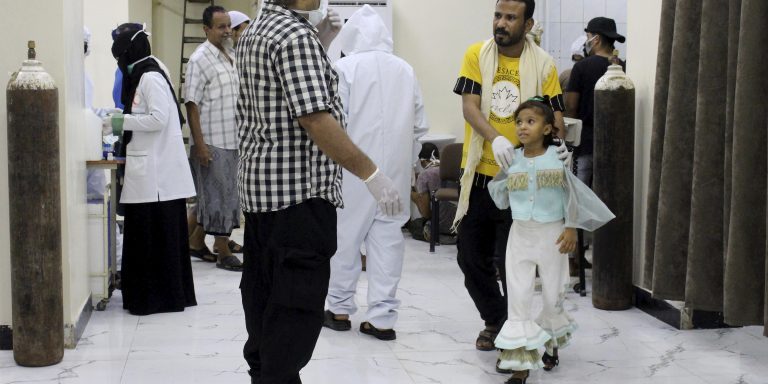INTELBRIEF
May 29, 2020
IntelBrief: Yemen Remains Among World’s Most Vulnerable Countries to Coronavirus

- Yemen is among the world’s poorest countries and after suffering several years of war, including the bombing of its hospitals and infrastructure by the Saudi Air Force, the country is extremely vulnerable to the coronavirus.
- Nearly 8 out of 10 Yemenis are in dire need of humanitarian assistance, which is complicated by the inability of international aid agencies to operate throughout the country.
- In Yemen, where people are now dying from coronavirus-like symptoms in the hundreds, nobody knows exactly how bad the pandemic is or exactly how bad it will get.
- Some models produced by the World Health Organization have predicted that as many as half of Yemen’s 30 million people could be infected with the disease and tens of thousands could perish as a result.
Just last week, Jean-Nicolas Beuze, the Representative of the United Nations Refugee Agency in Yemen, spoke from the capital Sana’a to confirm that the country is dealing with the rapid spread of the coronavirus (COVID-19). Yemen is among the world’s poorest countries and after suffering several years of war, including the deliberate bombing of its hospitals and infrastructure by the Saudi Air Force, the country is extremely vulnerable to the coronavirus. Besides coronavirus, many Yemenis have been devastated by cholera, dengue fever, and malaria. The Saudi and Emirati-led war has led to millions of internally displaced persons and hundreds of thousands of refugees with no homes to come back to and little respite from meddling regional powers, warring tribes, and violent militias. More than 100,000 Yemenis have been killed in the nearly five-year old conflict, most of whom are civilians. Despite a unilateral COVID-19 ceasefire announced for two weeks on April 9 by the Saudi-led coalition and later extended until the end of the month of Ramadan, airstrikes continued. At least two reports of airstrikes hitting COVID-19 quarantine facilities were recorded.
The rivaling governments in Yemen have few resources to keep Yemenis safe from the pandemic. Nearly 8 out of 10 Yemenis -- roughly24 million -- are in dire need of humanitarian assistance and protection, which has been difficult to provide because of the inability of international aid agencies to operate throughout the country. Due to the dangers of ongoing conflict and restrictions placed on international aid agencies because of the coronavirus, there are even fewer resources available for suffering Yemenis. Malnutrition, especially among children, is an additional risk factor and large segments of the population have not received proper vaccinations. Taken together, these conditions already facing Yemenis put them in more danger, including of becoming seriously ill from the coronavirus and transmitting it to others.
While Yemen has only 249 reported cases and 50 deaths officially as of late May, per the World Health Organization (WHO), experts have reported that Yemenis are now dying from corona-like symptoms by the hundreds. Save the Children reported that as many as 400 people died just in Aden over the course of one week. Given the level of extreme poverty in the country, few would expect it to have the resources or capabilities to systematically test for COVID-19, something that even wealthy countries like the United States has struggled to achieve. Doctors Without Borders (MSF) has warned that the situation will soon reach a point of no return, and once the coronavirus takes hold throughout the country, it will be nearly impossible to beat back. War, famine, poverty, and now a deadly pandemic have wreaked havoc on Yemen, which has been relegated to the lowest rung in terms of priorities for the international community. And despite Saudi Arabia’s ongoing reckless campaign, the United States continues to sell weapons to the Kingdom, with no regard for how these are used against civilian populations. Ironically, Saudi Arabia will host a UN pledging conference for Yemen next Tuesday.
Some models produced by the WHO have predicted that as many as half of Yemen’s 30 million people could be infected with the disease and tens of thousands could perish as a result. There is a complete lack of personal protective equipment (PPE), as one might expect in such a poor and war-torn country. The nightmare scenario that many feared would devastate Yemen when the coronavirus pandemic initially emerged has finally arrived, and the results are as dire, if not worse, than many predicted. Still, there has been a dearth of media attention focused on Yemen’s plight. This is partly because Western countries are focusing on their own struggles, and, perhaps cynically, because many people already expect bad things to happen in countries like Yemen—a country of 28.5 million, too often forgotten as a mere afterthought.
.
For tailored research and analysis, please contact: info@thesoufancenter.org